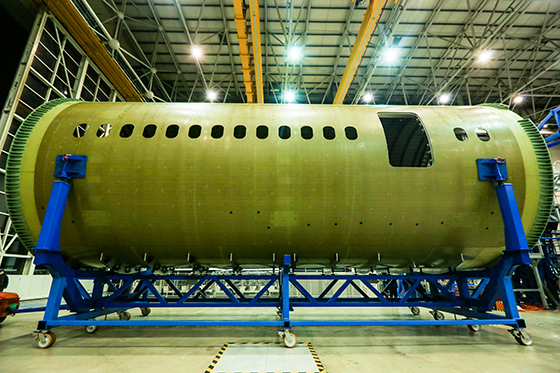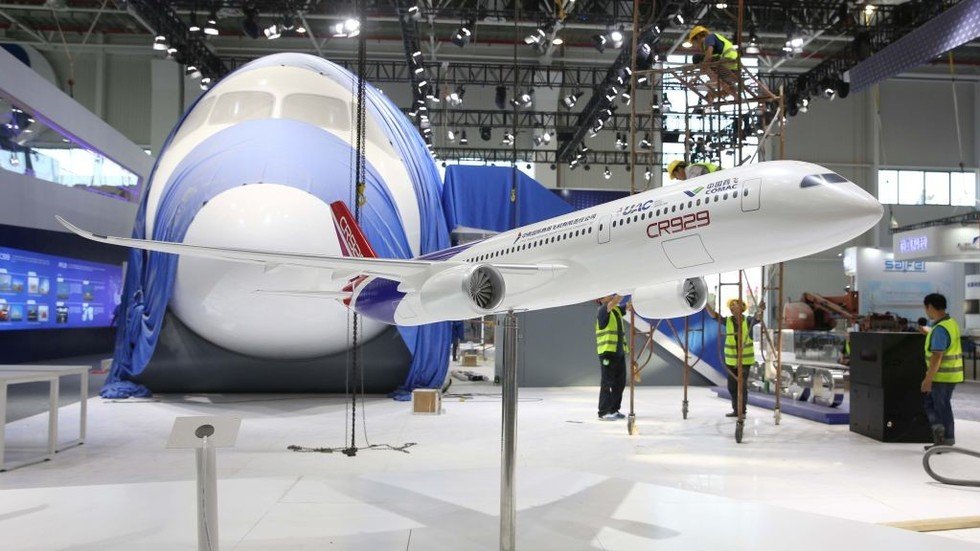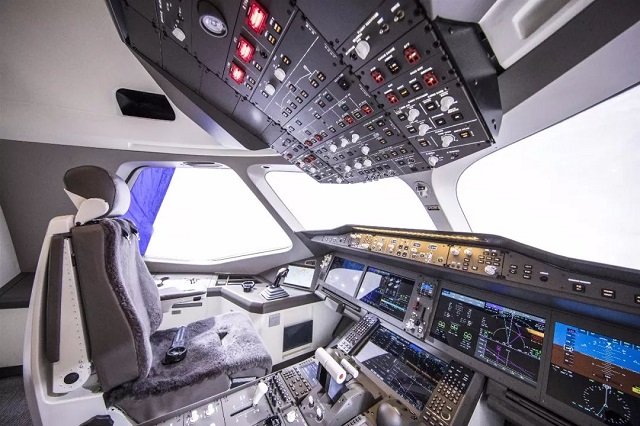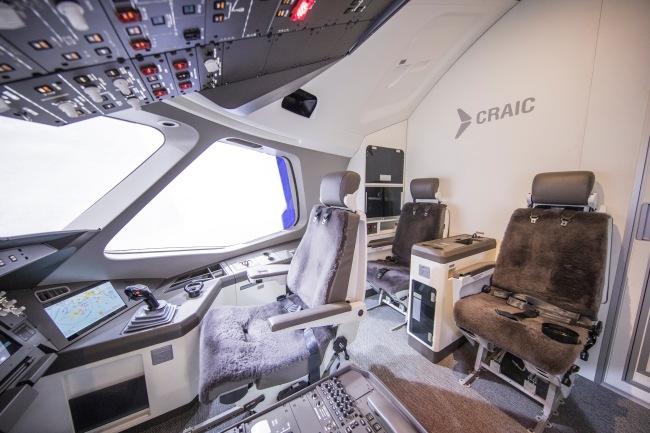First CR929 fuselage prototype complete
A major milestone has been achieved in the development of the CR929 widebody aircraft, with the first composite fuselage prototype now complete.
The CRAIC CR929, which some of you may remember as the Comac C929, is a widebody aircraft in development with a seating capacity of 250-300 and a range of 6,480 nautical miles (12,000km). CRAIC, which is a joint-venture between Comac and Russia’s United Aircraft Corporation (UAC), plans to use the aircraft to compete with Boeing and Airbus products of a similar category.
Seen in the image below is the fuselage piece, which measures 15m by 6m and will be used for testing and technical details since this marks the first time China is using only composites for the fuselage design.
Although no engine selection has been made yet, CRAIC expects to finalize a choice during the early stages of 2019 as well as landing gear suppliers. Engine manufactures on the drawing board consist of Rolls-Royce, General Electric and Pratt and Whitney for the initial stepping stones of the aircraft, with local engines including Russia’s Aviadvigatel set to meet the aircraft once established. The wings and tail section of the aircraft, which are both constructed using composite materials, will be manufactured in Russia, with final assembly and delivery of the aircraft taking place in Shanghai.
Three variants of the aircraft have been identified by CRAIC, those being the -500, -600 and -700. The -500 and -700 are yet to be finalized but are said to be easy accomplishments once the base -600 is in service. The following table outlines the basic estimated specifications for the variants.
| Variant | Seating (standard three-class) | Range |
| CR929-500 | 250 | 14,000km (7,560nm) |
| CR929-600 | 280 | 12,000km (6,490nm) |
| CR929-700 | 320 | 10,000km (5,400nm) |
Renderings and mockups that were unveiled earlier on sparked a large amount of questions within the aviation community, with many stating the aircraft is almost identical to the Boeing 787 Dreamliner and Airbus A350, with the nose featuring the same smooth curve and long, slender wings with A350-like winglets.

Cockpit wise, the aircraft appears to contain a mix of what we see in aircraft such as the Boeing 787 and Airbus A350 as well as any other relatively new aircraft. Five large flight displays dominate the space with sidesticks in their respective positions. It’s worth noting that the cockpit is still an early model and is subject to change. No information has been provided as to whether the displays are touchscreen and who is providing the avionics.


While the aircraft is in very early stages of its life, CRAIC is confident that when flying, it will tear apart the Boeing/Airbus duopoly we see around the world today. No orders are currently in place for the aircraft, however once initiated, demand is largely expected to come from China, with forecasts stating over 60% worth. The remaining portions are expected to be heading towards Russia and its surrounds as well as Africa, Asia-Pacific and the Middle-East.
Notice the absence of major areas such as Europe and America? Unless the aircraft is designed, built and tested to standards these places require, CRAIC will have a hard time introducing with airlines that require these standards. Additionally, with the incredibly large relationships Boeing and Airbus have with airlines around the world, CRAIC will have to put up one mighty fight to break past the salesmen and women of the two largest commercial aircraft manufactures.


